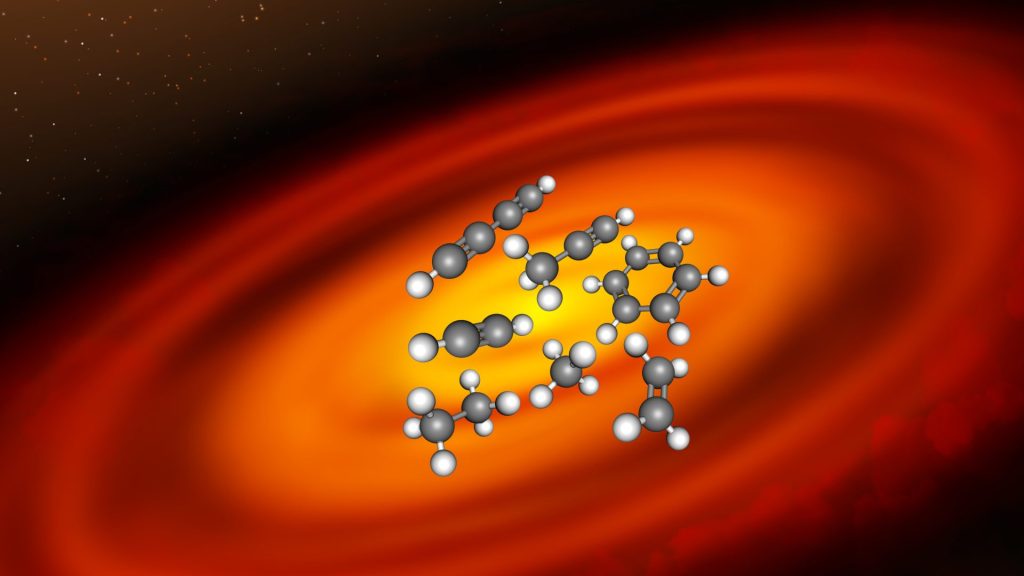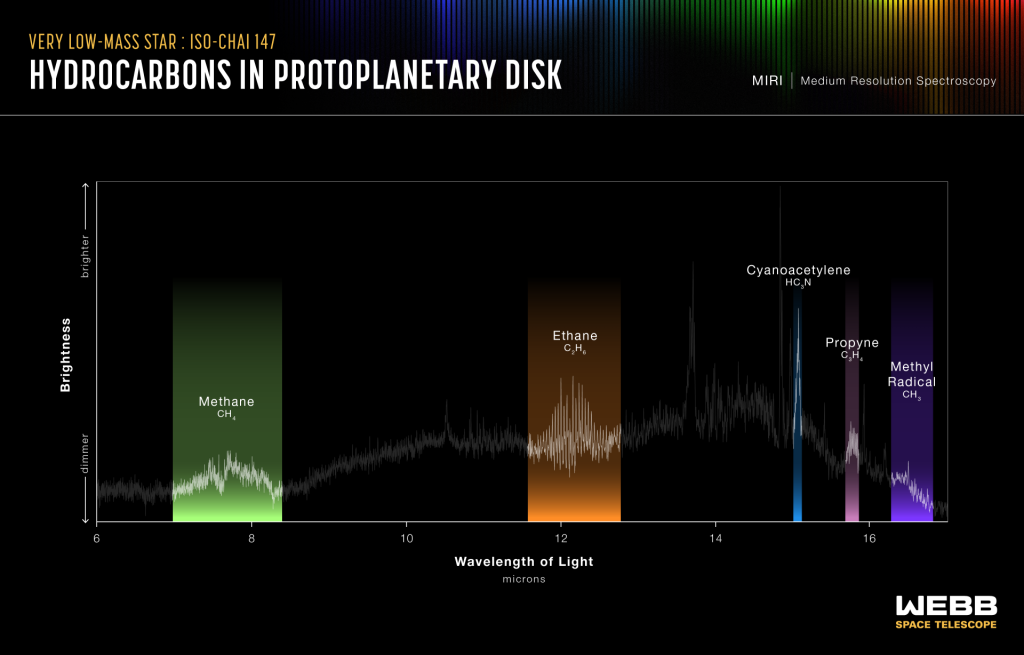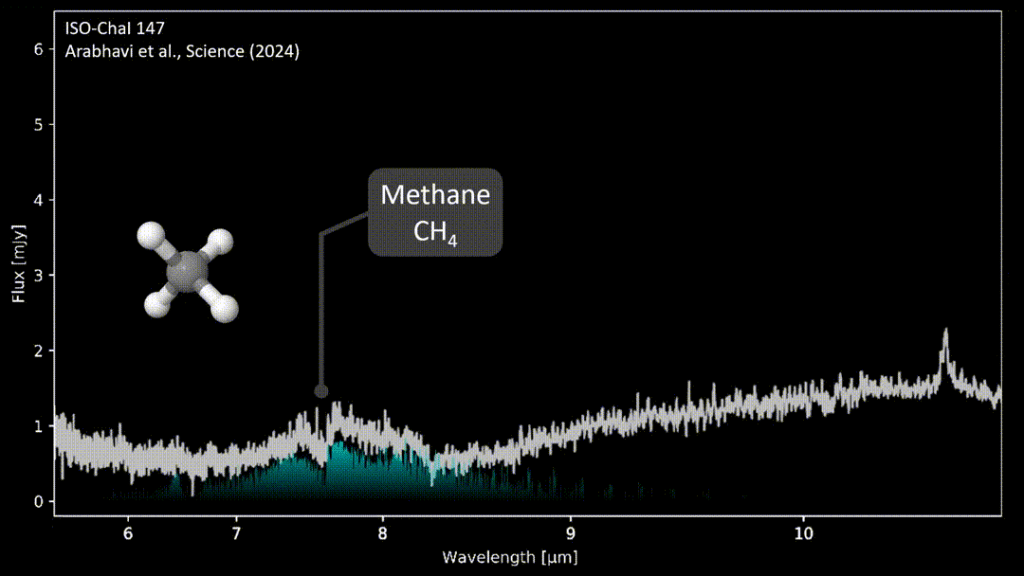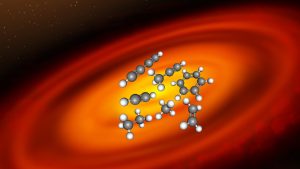An international research team, including scientists from CEA, has just revealed the chemical composition of a disk of matter rotating around a young star, where new planets are forming. The results reveal the largest number of carbonaceous molecules ever observed in such a disk, including some detected for the first time outside our solar system. These findings have implications for the potential composition of planets forming around this star. These results, published in the journal Science on Thursday June 6, were obtained as part of the guaranteed time program of the MIRI instrument, developed by a consortium of laboratories in Europe and the USA.

The study of protoplanetary disks
Rocky planets are common around very-low mass stars, as demonstrated by the well-known planetary system TRAPPIST-1. And yet, we know little about the chemistry of these worlds, which can be similar or very different to Earth. By studying the discs from which these planets are formed, known as protoplanetary discs, astronomers hope to gain a better understanding of how these planets form and their composition.
Protoplanetary discs around very low-mass stars (cf. Figure 2) are difficult to study because they are smaller and not as bright as discs orbiting larger stars. The MIRI Mid-INfrared Disk Survey (MINDS) aims to use the unique capabilities of the James Webb Space Telescope (JWST) to build a bridge between the chemical inventory of discs and the properties of exoplanets.

A cocktail of molecules detected around the young star ISO-ChaI-147
In a new study, the team explored the region around a very low-mass star of 0.11 solar masses (known as ISO-ChaI 147).
The spectrum revealed by Webb’s Mid-InfraRed Instrument (MIRI) shows the richest hydrocarbon chemistry seen to date in a protoplanetary disc, consisting of 13 carbon-bearing molecules (cf. Figure 3). This includes the first extrasolar detection of ethane (C2H6), ethylene (C2H4), propyne (C3H4), and the methyl radical CH3.
“It is incredible that we can detect and quantify the amount of molecules that we know well on Earth, such as benzene, in an object that is more than 600 light-years away,” said Agnès Perrin, a CNRS researcher at the Laboratoire de Météorologie Dynamique (LMD – CNRS/ENS-PSL/IPP/Sorbonne Université).
“Last year, we had already discovered a large quantity of acetylene (C2H2), diacetylene (C4H2) and benzene (C6H6) in a disc around a similar star. This discovery is an even richer cocktail of molecules, confirming that discs surrounding this type of star are genuine hydrocarbon factories,” added Benoît Tabone, a CNRS researcher at the Institut d’Astrophysique Spatiale (IAS – Université Paris-Saclay/CNRS).

A clearer view of disks around very low-mass stars
These results have major implications for planet formation. As JWST has shown that the gas present in the disc is carbon-rich, it is likely that little carbon is left in the solid materials from which planets may form. As a result, the rocky planets which may form there could be carbon-poor, just like Earth.
This work highlights the crucial need for scientists to collaborate across disciplines. The team notes that these results and the accompanying data can contribute towards other fields including theoretical physics, chemistry and astrochemistry, to interpret the spectra and to investigate new features in this wavelength range.

Contact : Pierre-Olivier Lagage
Further information:
- Press release from the European Space Agency (ESA)
- Publication in Science
- Fun application to discover which combined chemical signatures make up the measured spectrum of the disk around the very low-mass star ISO-ChaI 147. You can add and remove individual molecules to discover their influence on the spectrum.


